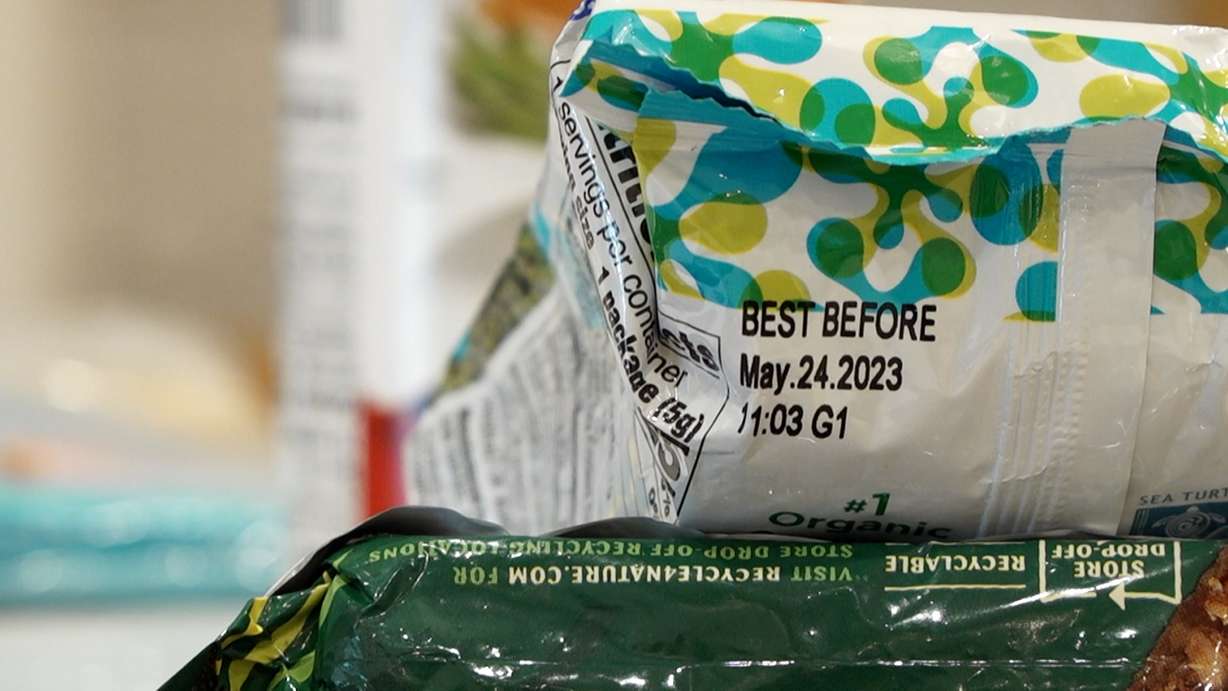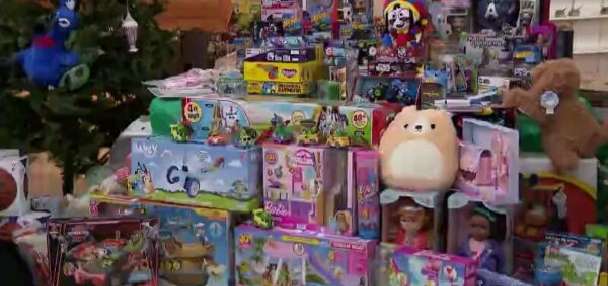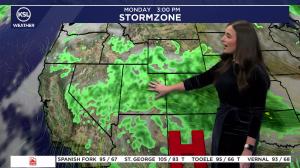Estimated read time: 3-4 minutes
This archived news story is available only for your personal, non-commercial use. Information in the story may be outdated or superseded by additional information. Reading or replaying the story in its archived form does not constitute a republication of the story.
MARRIOTT-SLATERVILLE, Weber County — Inside Kristina Enz's fridge, you'll find all the usual suspects: Eggs, cheese, fresh fruits and veggies, milk, and a collection of aging condiments.
Some of them were really aging, including a steak sauce that expired nearly two years ago.
"Apparently not using enough steak sauce," Enz remarked.
She opened her fridge and cupboards to KSL and Palak Gupta, an assistant professor in Utah State University's Department of Nutrition, Dietetics and Food Science.
Our goal wasn't to judge Enz for harboring way expired steak sauce, but rather to look at better understanding food date labels.
"It's hard to know what to throw out and what not to throw out," said Enz.
Guidelines — not rules
The variety of date labels adds to the confusion. Manufacturers use many different terms, which can be interpreted in many different ways: "Best Before," "Best When Used By," "Best When Purchased By," "Sell By," "Freeze By," "Packed On," "Fresh Until," "Enjoy By," "Use By," etc.
While labels like "Use By" sound like you need to consume a food item by a certain date or you'll get sick, that's not necessarily the case. Federal guidelines only require safety labeling for infant formula.
As for everything else? Gupta says it's just something manufacturers have chosen to do. "It's just an arbitrary guideline to tell you that manufacturers think this is the right time for its peak quality for the product," she said.
And that thought motivates manufacturers to set expiration dates days, if not weeks, ahead of when safety becomes a problem.
"You would be surprised how much food is getting thrown out just because consumers don't know it's still safe to eat," said Gupta.

Confusion leads to waste
A national survey published by Harvard Law School's Center for Health Law and Policy Innovation found that 37% of people always or usually toss out food based on the date label.
In an open letter to the food industry, the FDA highlighted an estimate that about 20% of all food waste in the U.S. is due to date label confusion. That adds up to tens of billions of dollars worth of food tossed into the garbage, according to the FDA.
Trust your senses
So, if confusing date labels aren't about safety, how do you avoid tossing food that's perfectly edible? The best answer is to trust your senses — sight, taste and smell.
"You definitely can do the sniff test," said Gupta. "You can sniff it and know if the food is right."
If it gives off a sour or foul odor, toss it. Or if you see mold, a weird color or perhaps sliminess, toss it. Or if the flavor or texture is off, toss it.
The USDA also has a free FoodKeeper app which can tell you how long specific items will last in your fridge or pantry before they're likely to spoil. And spoiler alert — it can sync your purchases to a calendar.
"It will send you a notification or reminder after like two weeks — 'Hey, it's in your fridge, use it,'" Gupta said. "It also sends recall information to your phone every day."
And food not handled properly can go bad before the label's date. We're talking about food left out on the counter too long or left in the car too long after the shopping trip. Or if it's stored in a fridge set to the wrong temperature. Palak says that should be set below 40ºF.
The bottom line: If a pack of sausages or a container of yogurt goes one or even a couple of days past the date on the label, you probably don't have to trash it.
However, a two-year-old bottle of steak sauce might be pushing it.










